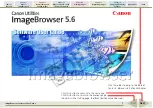
IBM United States Software Announcement
210-008
IBM is a registered trademark of International Business Machines Corporation
8
planned to be made available for z/OS V1.9, z/OS V1.10, and z/OS V1.11 with
PTFs for APAR OA30548 in February 2010.
Scalability and performance
The traditional view on scalability and performance has been to throw more
hardware at something, or to wait and upgrade to faster hardware. This hardware-
centric approach has worked for many years with the introduction of ever-larger
distributed clusters and storage arrays, and higher-speed and denser chip designs.
But the industry has begun to hit fundamental physical limits for chip design. Large-
magnitude CPU speed increases with each generation of chip are a thing of the past
and capacity increases will increasingly come not from raw hardware capabilities,
but from a deeper type of technical alignment.
IBM System z has long understood the balance between scalability and performance
and efficiency of the platform. The major components of the system, the processors,
storage, I/O, and software, work together and help manage system resources.
Essentially, z/OS and its subsystems provide for scalability not only based on faster
chip speeds, but also via efficient single-image n-way processor growth, highly
scalable sysplex clustering for horizontal growth, and scalable storage and data
management as well.
z/OS has had many scalability/performance improvements over the past several
releases. For example, z/OS V1.9 HiperDispatch can provide significant performance
gains for large LPARs through smarter dispatching of workloads on higher n-way
systems, and with z/OS V1.10 XL C/C++ workloads gained up to 8% performance
improvements with new compiler options and System z10® prefetch capabilities.
• Parallel Sysplex is many clustering solutions in one. A single cluster can be
used for scalability, performance, availability, software migrations, and disaster
recovery. While other platforms are just beginning to grasp the cloud concept,
Parallel Sysplex has been providing a dynamic cloud-like environment, where
resources and workloads can seamlessly move to where they are needed, for over
a decade. Parallel Sysplex provides a large single system image, dynamic load
balancing, fault tolerance, and automatic restart capabilities. No other technology
can compare -- other coupling capabilities are implemented in software, or loosely
linked with non-integrated tools. With z/OS V1.12, Parallel Sysplex technology is
planned to be updated with support for larger coupling facility structures.
• The scale and efficiency of System z do not end with the server. The amount
of data being stored by organizations is going up exponentially. Much of this
has to do with the wide variety of data formats and streams that are available,
but a good part of the explosion of data is probably from management (or
mismanagement) of a tremendous amount of data. The more data there is, the
greater the need for availability, scalability, security, and networking, and the
higher the risk from storage outages. Data on z/OS can help alleviate these
problems. Data Facility Storage Management Subsystem (DFSMS) is a software
suite that automatically manages data from creation to expiration and provides
a consistent, policy-driven approach to storage management across the storage
hierarchy. DFSMS provides allocation control for availability and performance,
backup/recovery and disaster recovery services, space management, tape
management, and reporting and simulation for performance and configuration
tuning. DFSMS can help you drive storage utilization and efficiency up to well over
90%. With z/OS V1.12, DFSMS supports additional data set types in Extended
Address Volumes (EAVs). EAVs can help relieve storage constraints as well as
simplify storage management by providing the ability to manage fewer, large
volumes as opposed to many small volumes.
• z/OS V1.12 also is planned to have updates for constraint relief for large volumes
of DASD and tape data sets and concurrently open data sets, with new designs in
the Program Management Binder, TSO/E, RACF, OAM, DFSMS, XCF, and InfoPrint®
Server for z/OS. In addition, numerous improvements to dump management
are planned to address the continued growth in diagnostic data that comes from
larger systems and larger programs using ever-larger amounts of memory. These
improvements can help you keep dump time and dump transmission time under
control.









































